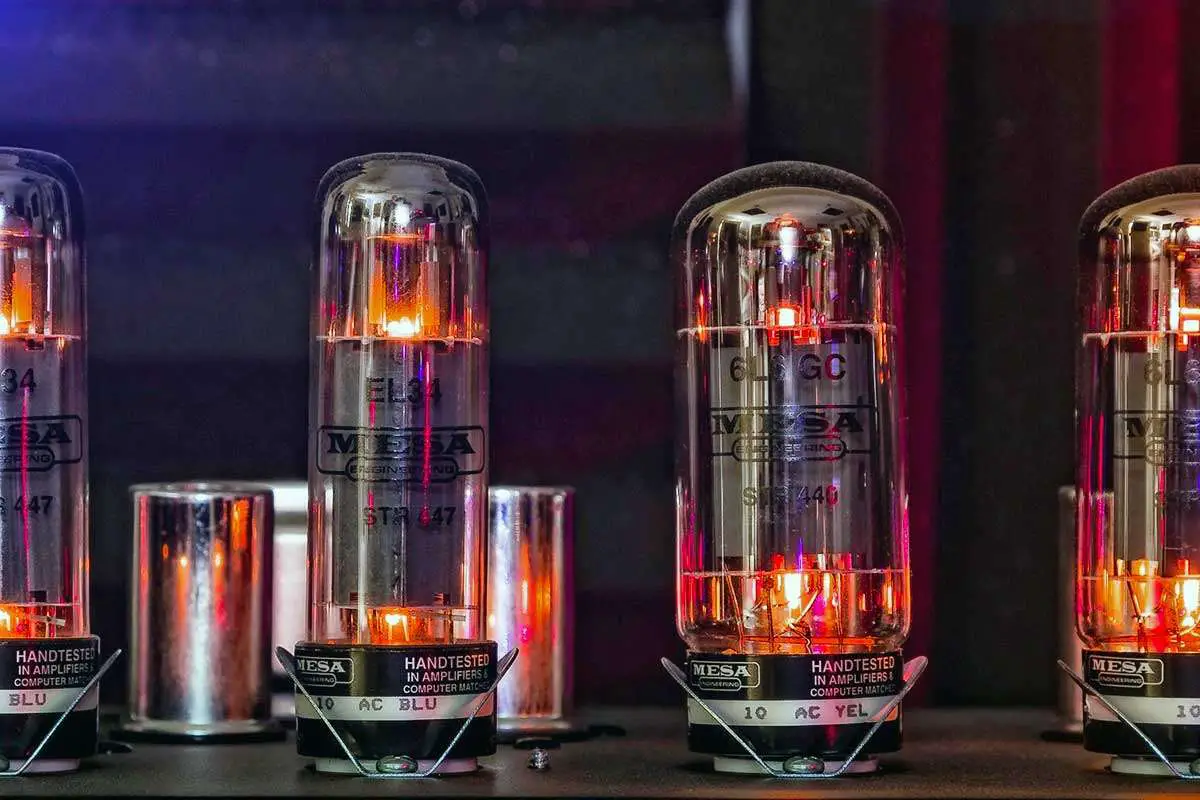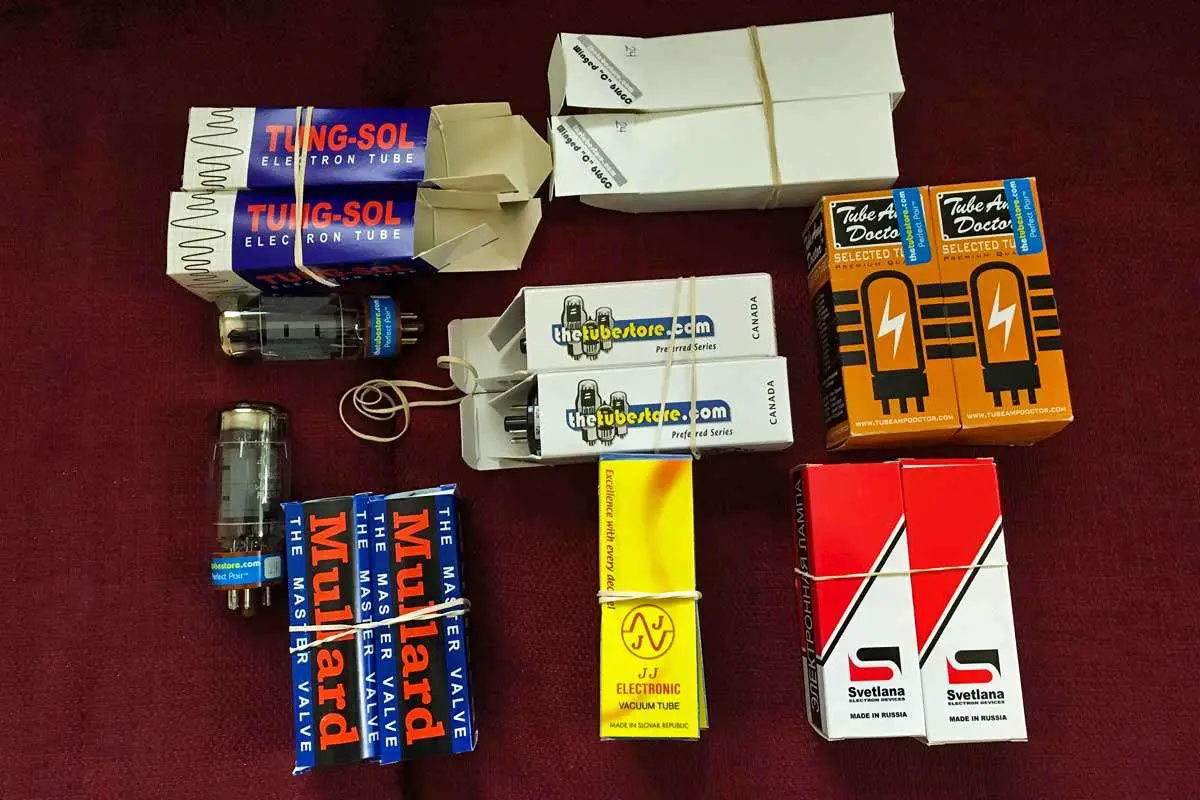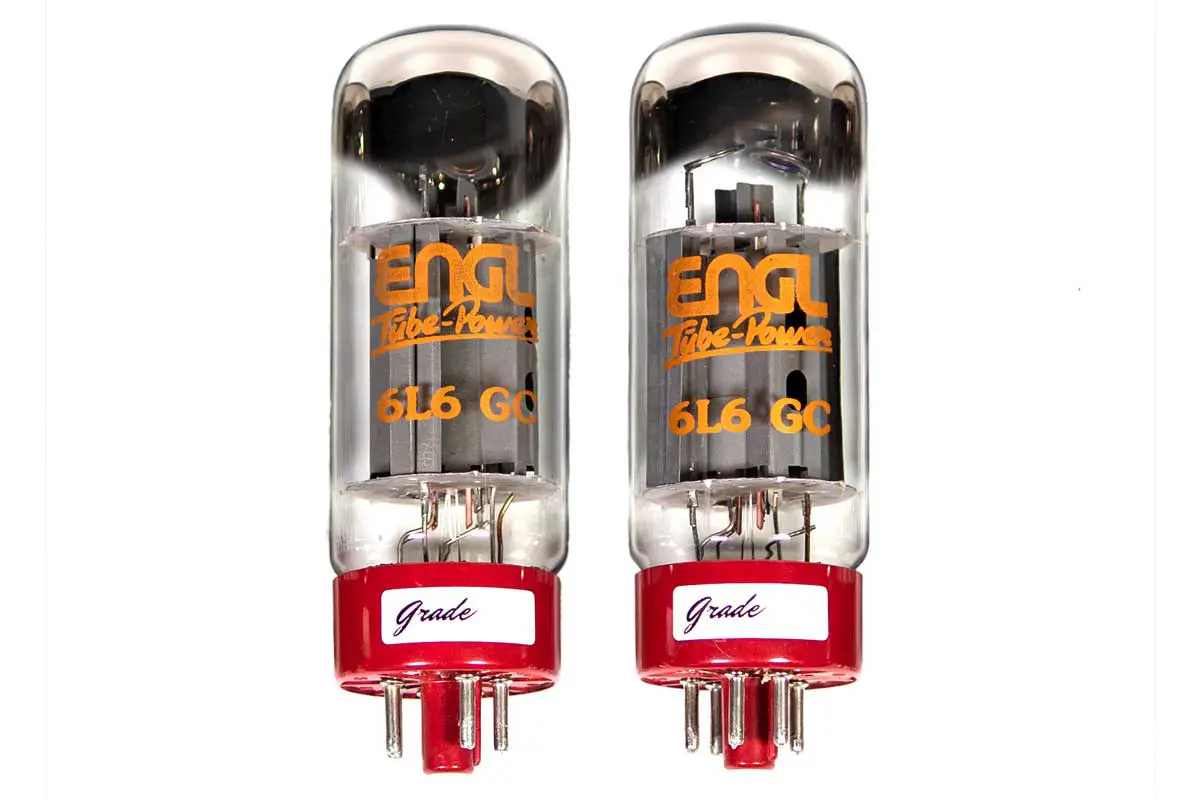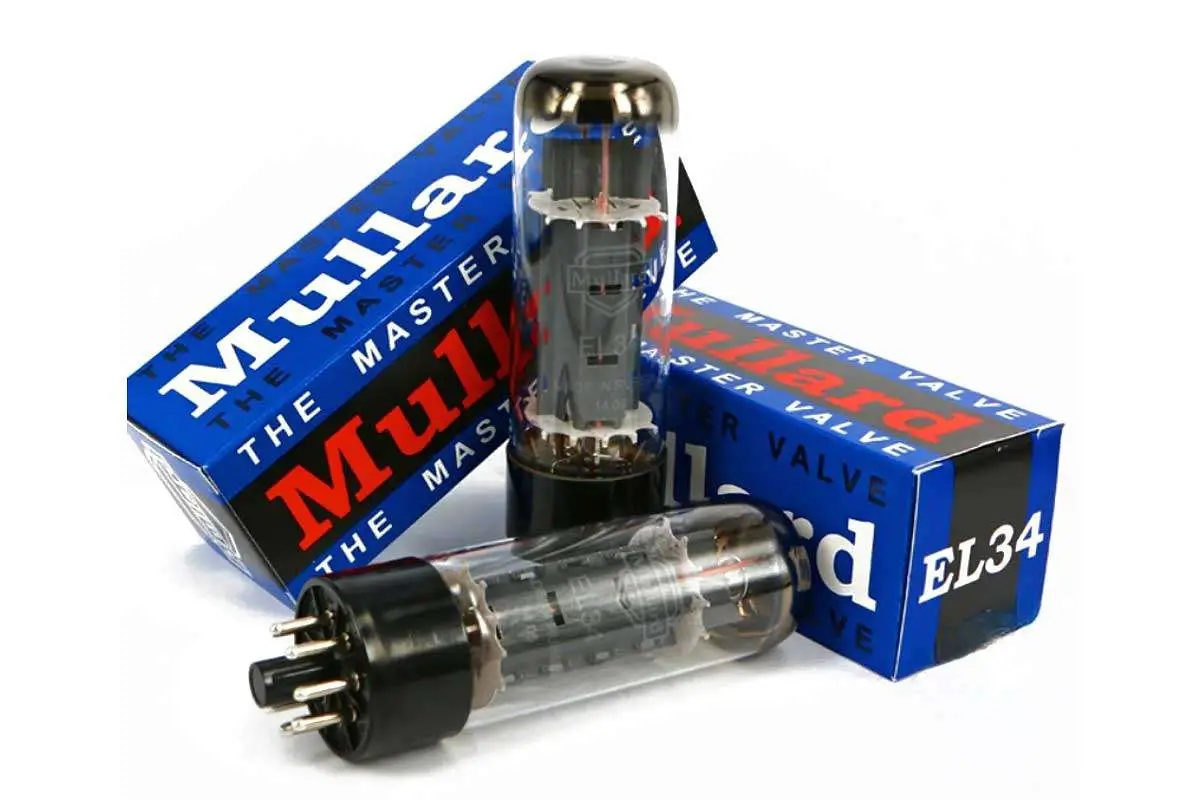When exploring the world of tube amplifiers, you’ll quickly encounter two of the most iconic power tubes often compared: the 6L6 vs EL34. Each of these vacuum tubes brings its unique sonic signature and electrical characteristics to guitar amplifiers and hi-fi systems. Understanding these differences is essential whether you’re looking to repair, modify, or build a tube amp from scratch.
The 6L6 tube, known for its robust headroom and clarity, has been a staple in American-made amplifiers for decades. It offers a bright and punchy sound that’s often associated with genres like country, jazz, and classic rock. In contrast, the EL34 tube is synonymous with the British sound, delivering a distinct midrange growl and smoother overdrive that’s preferred in rock and metal music. These tubes aren’t just different in sound; they differ in their operation and design, which influences how they shape the final tone of your amplifier.
Your choice between a 6L6 and an EL34 can significantly influence your sound. Should you seek the full-bodied warmth of 6L6 tubes or the aggressive crunch from EL34s? The decision lies in understanding these nuances and how they align with your tonal preferences and playing style. As you dive deeper into this comparison, you’ll gain the knowledge to make an informed decision that best fits your musical expression.

History and Origin of 6L6 and EL34 Tubes
In the landscape of vacuum tubes used in audio amplifiers, two have stood distinctively: the 6L6 and the EL34. Both have carved notable histories in shaping the sound of some of the most influential music through iconic amps like Fender and Marshall.
Introduction to 6L6 Tubes
The 6L6 tube is a power pentode known for its robustness and versatility. Its origin dates back to 1936, when it was introduced by RCA. This tube quickly became a staple in various electronic applications but found its true calling in audio amplification. The 6L6 tubes gained massive popularity in Fender amps, contributing to the warm, clean tones that became synonymous with American rock ‘n’ roll.
- First Appearance: 1936 by RCA
- Notable Usage: Fender Amplifiers
- Characteristics: High power, clarity, and headroom

Introduction to EL34 Tubes
Contrastingly, the EL34 tube is a power pentode beloved for its smooth and harmonically rich sound. Originating from Philips’ Mullard brand in 1954, the EL34 quickly became the heart of British rock, notably through its adoption by Marshall amps. This tube helped in delivering the aggressive overdrive and biting midrange that powered the British Invasion.
- First Appearance: 1954 by Philips’ Mullard
- Notable Usage: Marshall Amplifiers
- Characteristics: Midrange focus, smooth overdrive
By understanding the unique characteristics and origins of these two tubes, you can better appreciate the distinct sonic identities they’ve provided to countless musicians and the enduring legacy of their respective brands.
Technical Specifications and Electrical Differences
When comparing 6L6 and EL34 tubes, you should focus on their power handling capabilities, how they integrate with amplifier circuitry, and their internal construction differences.

Power Handling and Wattage
6L6 Tubes are known for their robust power handling, typically providing up to 30 watts. They are favored in amps where headroom and clean tones are paramount. In contrast, EL34 Tubes generally output a slightly lower wattage, around 25 watts, and are often sought for their distinct midrange character and smooth overdrive.
- 6L6 Power Handling: Up to 30 watts
- EL34 Power Handling: Around 25 watts
Related: A Guide on Power Amps vs Preamps
Amplifier Circuitry and Tube Characteristics
The bias voltage requirements for these tubes differ, affecting the overall amp design and tone. 6L6 tubes are frequently used in fixed bias configurations, demanding a precise bias voltage for optimal operation. EL34 tubes, however, tend to be more flexible, adaptable to both fixed and cathode bias setups, providing you with a wider tonal palette.
- 6L6 Circuitry: Fixed bias preferred
- EL34 Circuitry: Fixed or cathode bias
Pentode vs. Tetrode Construction
The EL34 tube is a pentode design with five active elements, which include three grids, the anode (plate), and the cathode, resulting in rich harmonics and detailed gain. 6L6 tubes, categorized as beam tetrodes, opt for a simpler four-element design that tends to yield more pronounced lows and highs. The distinction in construction heavily influences the electrical characteristics and the harmonic content of your amp.
- EL34 Tubes: Pentode, five active elements
- 6L6 Tubes: Beam tetrode, four active elements
Sound Profiles of 6L6 and EL34 Tubes
Exploring the distinctive sound profiles of the 6L6 and EL34 tubes, you’ll discover each has unique tonal characteristics shaping the American and British sound respectively. They differ in clean and overdriven tones, midrange texture, headroom capabilities, distortion properties, and their influence on different musical genres.
Clean and Overdriven Tone Characteristics
In the realm of clean tones, 6L6 tubes are celebrated for their brighter and fuller sound, delivering a robust low-end that caters well to country and blues. Their headroom makes the 6L6 suited for crystal-clear chords and punchy rhythms. Meanwhile, EL34 tubes feature a distinct midrange complexity offering a darker and bass-heavy quality. This is often associated with the classic California sound and is a staple in heavy rock performances.
When pushed into overdrive, the 6L6 tubes maintain clarity, adding a smooth texture to the sound, which is why they are often the go-to for many American-style amplifiers. On the other hand, EL34 tubes break up more readily into a thicker distortion synonymous with the British sound, making them ideal for the classic rock and metal tones where high gain and pronounced midrange are desired.
Midrange, Headroom and Distortion Properties
The midrange of these tubes is a significant point of comparison. EL34 tubes often exhibit a more pronounced midrange with a “scooped” sound profile, creating a sense of width in the tone. Conversely, 6L6 tubes offer a more even frequency response across the board, which can be perceived as a more balanced sound.
In terms of headroom, if your preference leans towards loud and clean with minimal distortion, 6L6 tubes can accommodate higher volumes without breaking up. EL34 tubes, however, reach their distortion threshold much quicker, providing a saturated gain that’s desirable in high-gain music styles.
Tonal Impact on Different Musical Genres
Your personal preference will dictate the choice between these tubes, especially when considering their impact on different genres. The heavy distortion and midrange focus of the EL34s align with more aggressive music such as metal and hard rock. Conversely, the 6L6 is synonymous with the American tone often sought in blues, country, and genres that require a clean, articulate low-end and versatility for both rhythm and lead playing.
Each tube type brings a distinct flavor to the table, and your selection can deeply influence your overall tone and adaptability across a variety of music styles. Whether you lean towards the warmth and midrange of the EL34s or the clarity and sparkle of the 6L6s, the choice will shape your sound and color your musical canvas in a way that’s unique to your artistic voice.
Compatibility and amp usage
In the realm of guitar amplifiers, tubes define character and power. The 6L6 and EL34 tubes are pivotal in shaping the tonal qualities as well as performance nuances of countless amplifiers. Understanding their compatibility and usage is crucial for any guitarist or amp technician.

Interchanging 6L6 and EL34 Tubes
6L6s and EL34s are not directly interchangeable in most cases because they have different pin configurations and power requirements. Some amps are designed to accommodate both, but typically swapping these tubes isn’t as simple as plug-and-play. It can require modifications to the amp’s circuit and should only be performed by knowledgeable technicians to ensure safety and proper functionality.
Amplifier Brands and Model Preferences
Manufacturers such as Fender, Marshall, Orange, and Blackstar typically design amps around specific tubes to achieve their signature sounds. For example, Fender’s Blues Jr often employs 6L6 tubes for clean headroom, while Marshall’s JCM 800 opts for EL34 tubes to facilitate its iconic British overdriven tones. Each tube imparts a distinctive sonic footprint—6L6 tubes tend to provide a brighter and bolder clean tone, whereas EL34s are known for midrange presence and smoother breakup.
Adjusting Bias and Modifying Amps for Tubes
When swapping tubes, the amp’s bias—the current running through the tubes—must be adjusted. Failing to do so can lead to poor performance or even damage. Adjusting bias is critical for both 6L6s and EL34s to operate effectively within an amp. Some modern amplifiers have switchable bias settings to accommodate different tube types. Modifying amps to accept a different tube type is a more complex task that can expand your amp’s capabilities, but it must be done with precision to maintain the integrity of your amp’s design and avoid potentially costly damage.
Related: A Guide To Setting Your Amp’s Bias
Valve Amplifier Tube Comparisons
Want to learn more about guitar amp tubes? Explore the nuanced distinctions between preamp and power tubes, including popular matchups like ECC83 vs 12AX7 and EL34 vs KT88, as we unravel the sonic differences that shape your guitar’s unique voice.
| Tube Types | Application |
|---|---|
| ECC83 vs 12AX7 | Preamp Tubes |
| 12AU7 vs 12AX7 | Preamp Tubes |
| 6L6 vs EL34 | Power Tubes |
| 6L6 vs KT66 | Power Tubes |
| 6L6 vs 6V6 | Power Tubes |
| 5881 vs 6L6 | Power Tubes |
| EL34 vs EL84 | Power Tubes |
| EL34 vs KT88 | Power Tubes |
| EL34 vs KT77 | Power Tubes |
| EL34 vs KT66 | Power Tubes |
| 6V6 vs EL84 | Power Tubes |
